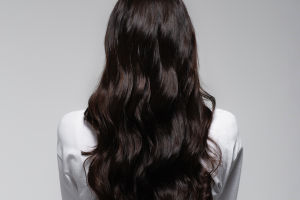Have you ever wondered if sustainable fashion could actually look as good—or better—than conventional styles?
For years, eco-friendly clothing had a reputation for being dull, stiff, or "too natural" to be truly fashionable. But the game is changing fast.
Today, designers are proving that using recycled fabrics and plant-based dyes can produce clothes that are not just kind to the planet, but genuinely stylish.
Let's unpack how recycled materials and eco-conscious brands are quietly leading a revolution in how we dress, without compromising on look or quality.
Recycled Fabrics: Giving Old Materials New Life
One of the most exciting developments in sustainable fashion is the rise of regenerated fibers. Instead of sourcing raw cotton or polyester, many brands now use fabrics made from recycled plastic bottles, discarded textiles, or post-consumer waste.
1. Recycled Polyester (rPET): By melting down plastic bottles and turning them into polyester yarn, this fabric reduces landfill waste and lowers carbon emissions compared to raw polyester. It's used in everything from sportswear to cozy sweaters.
2. Reclaimed Cotton: Scraps from garment factories or old clothes are shredded and spun into new yarn, cutting down the need for water-intensive new cotton farming.
3. Tencel and Lyocell: These are regenerated fibers derived from sustainably harvested wood pulp, processed with environmentally friendly solvents. They're soft, breathable, and biodegradable.
The result? Fabrics that feel great on skin and have a much smaller ecological footprint.
Plant-Based Dyes: The Return to Nature's Palette
Synthetic dyes are notorious for polluting water sources and using toxic chemicals. Plant-based dyeing offers a cleaner alternative — one that's also rich in heritage and artistry.
Natural dyes come from sources like:
— Indigo (from plants like woad or indigofera)
— Madder root (reddish hues)
— Pomegranate peel (subtle greens and browns)
Modern brands have refined these traditional methods, ensuring color fastness and durability while preserving eco-safety. This means vibrant, earthy colors that age beautifully, often with unique variations that mass-produced dyes can't replicate.
Brands to Watch: Sustainability Meets Style
You don't have to sacrifice design for ethics. Many labels have made sustainability a core part of their identity — while creating looks you'd want to wear anywhere.
1. Patagonia: A pioneer in recycled fabrics and fair labor, their pieces combine durability with classic outdoor style.
2. Eileen Fisher: Known for timeless, minimalist pieces, they've embraced plant dyes and take-back programs for old clothes.
3. Stella McCartney: Luxury fashion with a clear green conscience — from recycled nylon swimwear to organic cotton suits.
4. Tentree: Focuses on sustainable fabrics and planting ten trees for every item sold, blending eco values with street-ready casual wear.
5. Outerknown: Co-founded by pro-surfer Kelly Slater, this brand emphasizes recycled materials and ocean-friendly manufacturing.
These brands show that eco-fashion isn't a niche anymore; it's becoming mainstream — and fashionable.
Why This Matters: Experts Weigh In
Fashion accounts for nearly 10% of global carbon emissions and massive water use. According to Dr. Laura Benson, a textile sustainability researcher:
"Switching to recycled fibers and plant-based dyes can reduce the environmental impact of clothing by up to 70%. It's not just a trend but a necessary step to meet climate goals."
Her research highlights that consumer choices push brands to innovate. When shoppers demand eco-consciousness, the industry responds — and that means better options for everyone.
How to Embrace Eco-Friendly Fashion Without Sacrificing Style
If you're curious about adding sustainable pieces to your wardrobe, here's how to start:
1. Look for certifications: Labels like Global Recycled Standard (GRS) or OEKO-TEX verify recycled content and chemical safety.
2. Prioritize quality over quantity: A well-made recycled jacket or dress can last years and replace multiple fast-fashion buys.
3. Explore color stories: Choose items dyed with natural pigments for subtle tones that complement your existing wardrobe.
4. Support brands with transparency: Read up on their supply chain practices and take-back or recycling initiatives.
5. Experiment with secondhand shopping: Vintage and thrift stores are treasure troves for eco-conscious fashion lovers.
So, what's your take? Could recycled fabrics and plant dyes become your next style statement? Or maybe you've already started exploring sustainable fashion — what surprised you the most? Share your thoughts — because looking good and doing good just might be the ultimate trend worth following.


